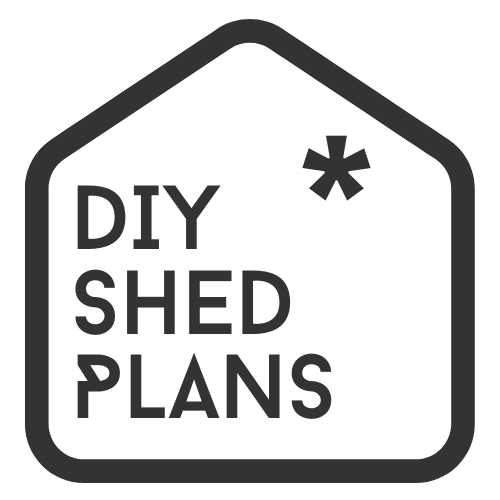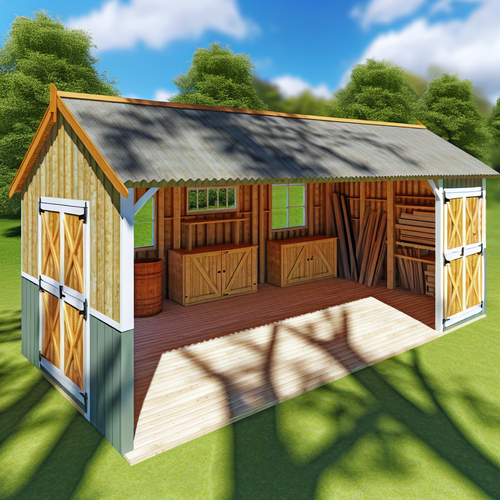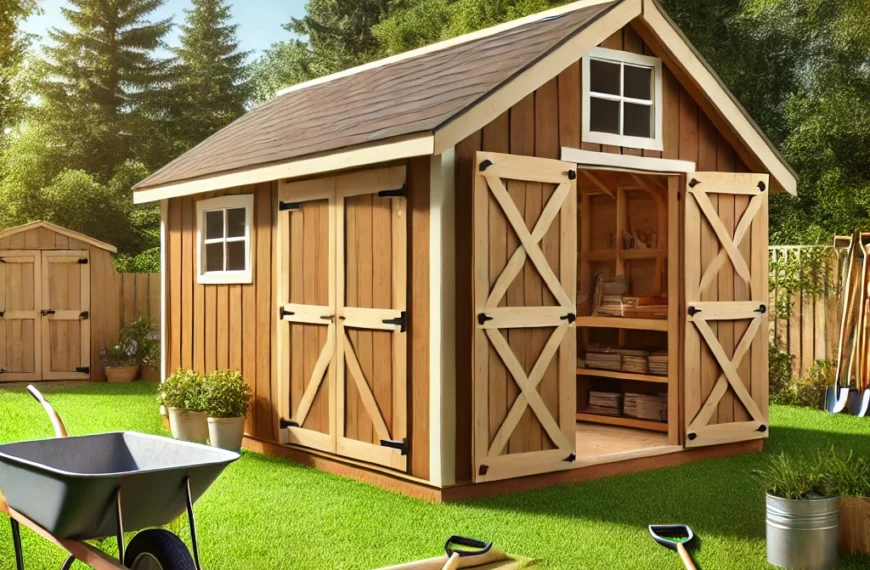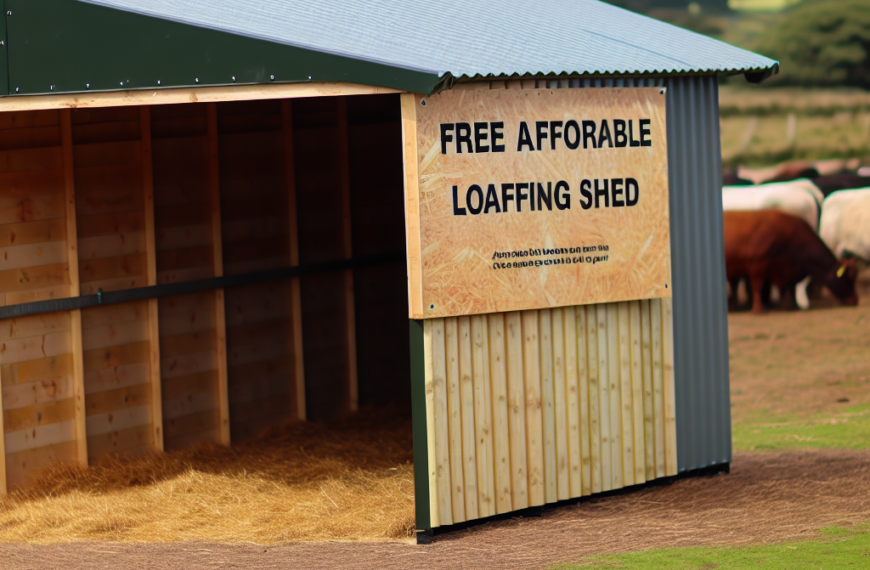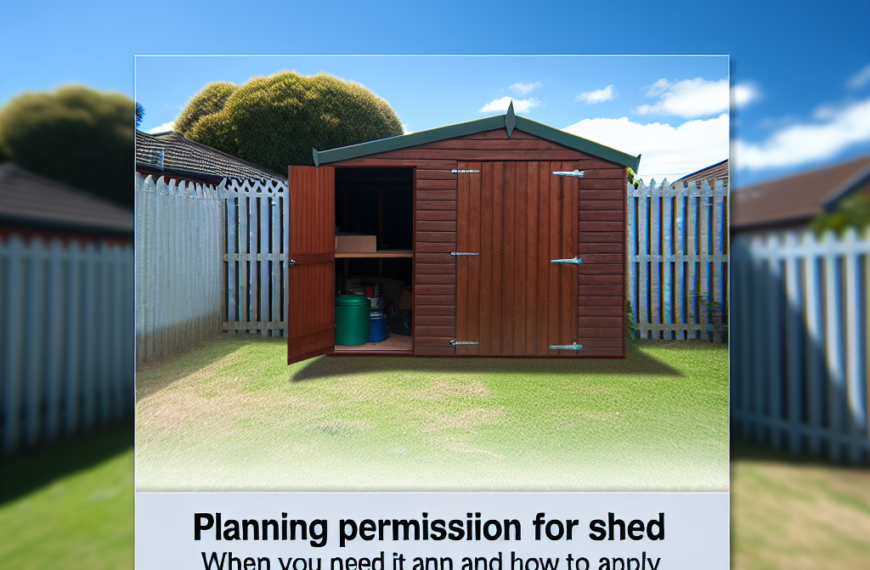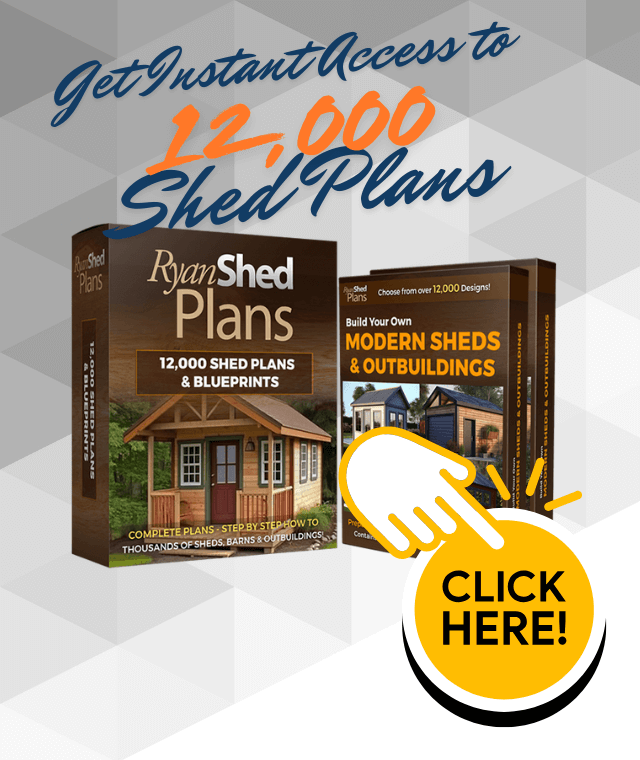A well-designed garden shed is far more than just a storage unit; it’s an extension of your home, a dedicated space for hobbies, a workshop, or even a quiet retreat. For those with larger properties or ambitious needs, a large garden shed offers unparalleled versatility and utility. However, the journey from concept to a functional, aesthetically pleasing large shed requires meticulous planning and a deep understanding of various considerations. This comprehensive guide will walk you through everything you need to know about large garden shed plans, ensuring your investment yields maximum benefits and stands the test of time.
Why a Large Garden Shed? Unlocking Its Full Potential
The decision to build a large garden shed often stems from a need for more than just basic tool storage. While a small shed might suffice for a few garden implements, a larger structure opens up a world of possibilities, transforming underutilized garden space into a valuable asset. Understanding these potential uses can significantly influence your planning and design choices.
- Dedicated Workshop: For the DIY enthusiast, carpenter, or mechanic, a large shed provides ample space for workbenches, power tools, and project materials. It keeps dust, noise, and clutter out of your main living areas.
- Hobby or Art Studio: Imagine a quiet, well-lit space dedicated to painting, pottery, crafting, or model building. A large shed can be insulated, heated, and equipped with proper lighting to create an ideal environment for creative pursuits.
- Home Office or Remote Workspace: With the rise of remote work, a detached shed offers a serene, distraction-free environment separate from the main house. It can be outfitted with electricity, internet, and even basic plumbing for a small sink or toilet.
- Potting Shed and Greenhouse Hybrid: For avid gardeners, a large shed can combine storage for pots, soil, and fertilizers with dedicated areas for potting, seed starting, and overwintering delicate plants, often incorporating large windows or translucent panels for light.
- Outdoor Living Extension: Beyond utility, a large shed can serve as a summer house, a pool changing room, an entertainment area with a bar, or even overflow guest accommodation, especially if designed with comfort and aesthetics in mind.
- Secure Storage for Large Equipment: Items like lawnmowers, ATVs, kayaks, bicycles, or even small tractors require significant space and security. A robust, large shed provides a safe haven from theft and weather damage.
Beyond these specific uses, a large, well-built shed adds significant value to your property. It enhances organization, protects valuable belongings from the elements, and provides a designated space for activities that might otherwise clutter your home or garage. The key is to think expansively about its potential before you even begin to draw up plans.
Understanding Large Shed Types & Materials
The aesthetic and functional success of your large garden shed hinges greatly on the type of structure and the materials you choose. Each option comes with its own set of advantages, maintenance requirements, and cost implications.
Common Shed Styles:
- Gable Roof Shed: This is the most common and classic shed design, featuring a roof that slopes down two sides, forming a triangular shape at the ends (gables). It’s easy to build, offers good drainage, and provides decent headroom.
- Barn Style (Gambrel Roof) Shed: Characterized by its unique gambrel roof, which has two different slopes on each side, resembling a traditional barn. This design maximizes overhead storage space, making it ideal for adding a loft or second story for extensive storage.
- Lean-To Shed: Designed to be built against an existing structure, like a house or garage wall. It’s space-efficient and often used when yard space is limited. It typically has a single-sloped roof.
- Saltbox Shed: A distinctive asymmetrical roof design where one side of the roof is longer and extends further down than the other. This style is often chosen for its unique architectural appeal and can offer good protection from prevailing winds and rain.
- Skillion/Mono-pitch Roof Shed: Features a single, flat, sloping roof. This modern design is simple to build, offers good drainage in one direction, and can be energy-efficient.
- Custom Designs: For unique needs or challenging sites, a custom design allows you to tailor every aspect, from multi-level structures to integrated outdoor living areas.
Primary Building Materials:
- Wood:
- Pros: Highly customizable, aesthetically pleasing, natural look, good insulation properties, relatively easy to modify post-construction.
- Cons: Requires regular maintenance (painting, staining, sealing) to prevent rot, pest infestation, and weathering. Can be susceptible to fire.
- Types: Treated pine (common, budget-friendly), cedar (naturally rot and insect resistant, more expensive), redwood (durable, beautiful, premium cost), plywood/OSB (for sheathing).
- Metal:
- Pros: Extremely durable, low maintenance, fire-resistant, good security, often cheaper upfront, quick to assemble.
- Cons: Can be prone to rust (if not galvanized or properly coated), less aesthetically versatile, prone to condensation without insulation, can heat up significantly in direct sun, often noisy during rain.
- Types: Galvanized steel, aluminum.
- Plastic/Resin:
- Pros: Very low maintenance, weather-resistant, do not rust or rot, easy to assemble (often snap-together kits), lightweight, relatively inexpensive.
- Cons: Less sturdy than wood or metal, can fade over time, less customizable, may not withstand extreme weather as well, generally less secure.
- Composite Materials:
- Pros: Blends the best of different materials, often mimics wood aesthetically, highly durable, low maintenance, resistant to rot, insects, and fading.
- Cons: Can be more expensive than traditional materials.
The choice of material will significantly impact the shed’s longevity, appearance, and the amount of ongoing effort required to maintain it. Consider your local climate, budget, desired aesthetic, and how much time you’re willing to dedicate to upkeep.
The Blueprint for Success: Essential Planning Steps
Before any hammer is lifted or foundation poured, thorough planning is non-negotiable for a large garden shed project. Skimping on this stage can lead to costly mistakes, functional shortcomings, and even legal issues.
1. Define Your Purpose and Requirements:
- Revisit the “Why a Large Garden Shed?” section. Be specific: Will it house a riding lawnmower and garden tools, or be a fully-fledged woodworking shop with dust collection?
- List all items you intend to store or activities you plan to conduct inside. This dictates size, door type, power needs, and internal layout.
- Consider future needs. Do you anticipate acquiring more tools or expanding a hobby? It’s often cheaper to build slightly larger now than to outgrow your shed quickly.
2. Site Selection and Preparation:
- Accessibility: Is the site easily accessible for construction materials delivery and for moving large items in and out of the completed shed?
- Drainage: Avoid low-lying areas where water collects. Proper drainage is crucial to prevent foundation issues, rot, and moisture problems inside the shed. You might need to regrade the site or install a French drain.
- Sunlight Exposure:
- Too much sun: Can cause excessive heat buildup, especially in metal or uninsulated sheds, and potentially fade stored items.
- Too little sun: Can lead to dampness, moss growth, and make the interior dark. Consider natural light for workshops or studios.
- Proximity to Utilities: If you need electricity or water, placing the shed closer to existing hookups will reduce trenching and wiring costs.
- Local Regulations & Setbacks: This is critical. Check with your local planning department or homeowners’ association (HOA) for zoning laws, building codes, setback requirements (how far from property lines/other structures), and maximum height/size restrictions. Ignoring these can lead to fines or forced demolition.
- Ground Leveling: The chosen site must be level. Significant leveling may require professional excavation.
3. Size Determination:
- Once your purpose is clear and items are inventoried, you can accurately estimate the necessary footprint.
- Factor in working space around benches or equipment, and clearance for doors to open.
- Don’t forget vertical space for shelving, hanging tools, or even a loft.
- Common large shed sizes might range from 10×12 feet to 12×24 feet or even larger, but always base it on your specific requirements, not just standard dimensions.
4. Budgeting:
- Materials: Lumber, siding, roofing, windows, doors, hardware.
- Foundation: Concrete, gravel, blocks.
- Labor: If you’re not building it yourself.
- Tools: Any specialized tools you’ll need to buy or rent.
- Utilities: Electrical wiring, lighting, outlets, plumbing (if applicable).
- Permits: Fees for building permits.
- Finishing Touches: Paint, insulation, interior shelving, security features.
Get multiple quotes for materials and labor. Don’t forget to add a contingency fund (10-20%) for unexpected costs.
Designing Your Dream Shed: Features and Functionality
With your purpose defined and site chosen, it’s time to delve into the design specifics that will make your large shed truly functional and enjoyable.
- Doors and Windows:
- Doors: For large items like mowers or ATVs, a double-wide door or a roll-up garage door is essential. Consider the swing radius or roll-up mechanism. Position doors for easy access from your primary pathway.
- Windows: Provide natural light and ventilation. Placement should optimize light for work areas and allow for cross-ventilation to prevent moisture buildup. Security is also a factor – consider smaller, higher windows or grilles.
- Flooring: The flooring must withstand the intended load and use.
- Concrete Slab: Best for heavy equipment, workshops, or any use requiring a stable, durable, and easily cleanable surface. Resists moisture.
- Treated Plywood on Joists: Good for lighter storage or general use. Must be elevated above ground to prevent moisture damage.
- Gravel/Dirt: Only suitable for very basic, non-structural storage and is prone to dampness. Not recommended for large sheds with valuable contents.
- Ventilation: Crucial for preventing moisture, mold, mildew, and heat buildup.
- Passive Vents: Gable vents, continuous soffit and ridge vents promote air circulation.
- Active Ventilation: Exhaust fans, especially if chemicals, paints, or machinery are used.
- Windows: Strategic placement for cross-breeze.
- Insulation: If you plan to use your shed year-round for a workshop, office, or studio, insulation is vital for temperature control and comfort.
- Walls, Roof, and Floor: Fiberglass batts, rigid foam boards, or spray foam can be used.
- Vapor Barrier: Essential to prevent condensation within insulated walls.
- Electrical Wiring and Lighting: Almost all large sheds benefit from electricity.
- Outlets: Sufficiently placed for tools, chargers, and general use. Consider 240V outlets for heavy machinery.
- Lighting: Overhead fixtures for general illumination, task lighting for workbenches, and exterior lights for safety and security.
- Sub-panel: For extensive electrical needs, a dedicated sub-panel may be required, installed by a licensed electrician.
- Shelving and Storage Solutions: Maximize vertical space.
- Built-in Shelves: Sturdy, custom-built shelving can handle heavy loads.
- Pegboards and Wall Organizers: Keep tools visible and off the floor.
- Overhead Storage/Lofts: Utilize the upper reaches of the shed for seasonal items or less frequently used equipment, especially in gambrel-style sheds.
- Cabinets: For chemicals or items needing dust protection.
- Roofing Material: The roof protects your investment.
- Asphalt Shingles: Common, affordable, good lifespan, various colors.
- Metal Roofing: Durable, long-lasting, fire-resistant, good for shedding snow/rain, can be noisy in heavy rain.
- EPDM/Rubber Roofing: Good for low-slope or flat roofs.
- Roof Pitch: Ensure adequate slope for water runoff.
From Plans to Reality: Construction Considerations
Once the planning and design phases are complete, the actual construction begins. This stage requires adherence to safety, proper techniques, and often, professional assistance.
- Permits and Inspections: Before breaking ground, ensure all necessary building permits are acquired from your local municipality. Large sheds often require them due to their size and potential impact on property lines or utilities. Be prepared for inspections at various stages (foundation, framing, electrical, final).
- Foundation Work:
- Concrete Slab: The most robust option for large sheds. Involves excavation, forming, laying vapor barrier, rebar/mesh, and pouring concrete. Requires professional expertise for proper leveling and curing.
- Gravel Pad with Skids/Runners: A cost-effective alternative for lighter sheds. Involves excavating a shallow area, laying down a weed barrier, and compacting a gravel base. Treated timber skids or runners sit on the gravel, providing a base for the shed floor.
- Concrete Piers or Blocks: Elevates the shed, allowing for air circulation underneath, good for uneven terrain. Requires careful leveling of each pier.
- Framing: This is the skeletal structure of your shed. It involves constructing the floor frame, walls (studs, top/bottom plates), and roof trusses or rafters. Accuracy in framing is crucial for the shed’s stability and for doors/windows to fit correctly.
- Sheathing and Siding: Once the frame is up, the exterior sheathing (often OSB or plywood) is applied, followed by a weather barrier (house wrap), and then your chosen siding material (wood, vinyl, metal). Proper installation prevents moisture intrusion.
- Roofing Installation: The roof deck is covered with felt paper or an underlayment, followed by the chosen roofing material (shingles, metal panels). Correct flashing around any penetrations (vents, chimneys) is vital to prevent leaks.
- Door and Window Installation: Precision is key here to ensure smooth operation and a weather-tight seal.
- Interior Finishing: This includes installing flooring, insulating walls and ceiling (if applicable), running electrical wires, installing lighting and outlets, and adding any built-in shelving or workbenches.
- Safety First: Always prioritize safety during construction. Wear appropriate personal protective equipment (PPE) like safety glasses, gloves, and hearing protection. Use ladders safely and understand power tool operation. If uncomfortable with any aspect, hire a professional.
Finishing Touches and Long-Term Maintenance
Building your large shed is a significant achievement, but a few finishing touches and a commitment to ongoing maintenance will ensure its longevity and continued appeal.
- Exterior Painting or Staining: For wood sheds, this is crucial for protection against UV rays, moisture, rot, and insects. Choose high-quality exterior paint or stain. Consider colors that complement your home.
- Landscaping Around the Shed:
- Ensure proper drainage away from the foundation.
- Avoid planting large trees or shrubs too close to the shed, as their roots can damage the foundation and branches can rub against the siding or roof.
- A well-maintained perimeter adds to the shed’s aesthetic appeal.
- Security Measures: Given the value of contents, security is paramount for large sheds.
- Invest in heavy-duty locks and hasps.
- Consider motion-sensor lights.
- Reinforce doors and windows.
- An alarm system can deter intruders.
- Regular Inspections: Periodically check your shed for signs of wear and tear:
- Roof: Look for missing shingles, cracked caulk, or signs of leaks.
- Siding: Check for cracks, rot, peeling paint, or pest damage.
- Foundation: Look for cracks, settling, or signs of water pooling.
- Doors & Windows: Ensure they seal properly and hardware is secure.
- Pest Control: Seal any gaps or cracks to prevent rodents and insects from entering. Consider natural deterrents or professional pest control if needed.
- Gutter Cleaning: If your shed has gutters, keep them free of leaves and debris to ensure proper water drainage and prevent fascia damage.
- Interior Organization: Regularly declutter and organize the interior to maintain functionality and maximize space.
By following these steps for planning, design, construction, and maintenance, your large garden shed will be a durable, valuable, and highly functional addition to your property for many years to come, fulfilling all the purposes you envisioned.
Conclusion
Embarking on a large garden shed project is a substantial undertaking, but one that offers immense rewards in terms of added space, functionality, and property value. As we’ve explored, the journey begins long before construction, with meticulous planning being the cornerstone of success. From defining the precise purpose of your shed – be it a dedicated workshop, a tranquil studio, or robust storage for large equipment – to selecting the appropriate style and materials that align with your needs and local climate, every decision plays a crucial role.
We delved into the critical planning steps, emphasizing the importance of site selection, accurate size determination, and, crucially, adhering to local regulations and budgeting wisely. The design phase highlighted key features like optimal door and window placement, robust flooring, essential ventilation, and the integration of utilities like electricity for year-round usability. Finally, we covered the practical construction considerations, from laying a solid foundation to the finishing touches and ongoing maintenance that will ensure your large shed remains a valuable asset for decades.
A well-planned and executed large garden shed is more than just a building; it’s an investment in your lifestyle, offering a dedicated sanctuary for your tools, hobbies, or even your work. By thoughtfully considering each stage outlined in this guide, you can confidently transform your vision into a reality, creating a durable, functional, and aesthetically pleasing extension of your home. Your dream shed awaits – plan wisely, build robustly, and enjoy the profound utility it brings to your outdoor space.
